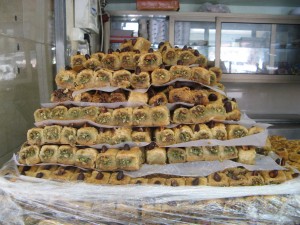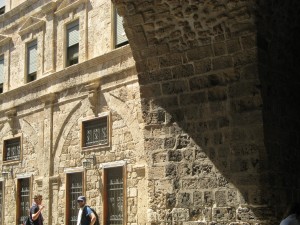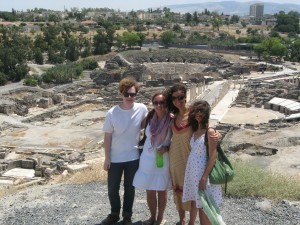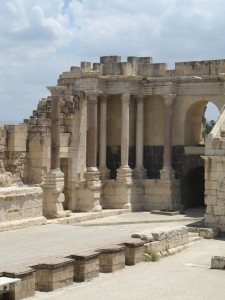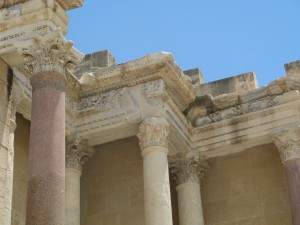Over the next few days, Elvira and Lydia will post several photos recording our group’s day trips to various sites around Israel.

Medieval and modern construction pile on top of each other and spill into the narrow, winding streets leading to Akko’s Ottoman Jezzar Pasha mosque.
On one of our favorite trips, we visited Akko (Acre), a Galilean city perched on a small peninsula in the Mediterranean. The city’s access to the Mediterranean through its natural harbor has made it an attractive site for settlement since the 4th millennium BCE, and both the Hebrew Bible and Greek and Hellenistic texts mention the city. For the same reasons, Akko was a center of Roman and Byzantine military control over the Galilee region, and served an even more important role strategically when ruled by the Umayyads and Abbasids in the medieval period. In the 12th century, Crusaders captured the city and used it as a base for their expansion into the Levant. The eight centuries since the Crusader period have added everything from Ottoman mosques to Israeli administrative centers to the city, and today, a vibrant bicultural community thrives among the ancient remains.

The spunky domes of a neighborhood mosque peep out among rooftop patios and the facades of more stately buildings.
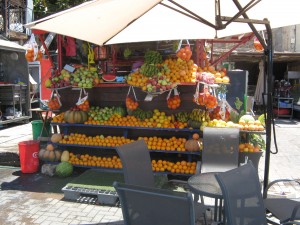
Vendors selling fruit and freshly squeezed juice line the streets of the Old City of Akko, providing much-needed sugar rushes to hot, thirsty tourists.
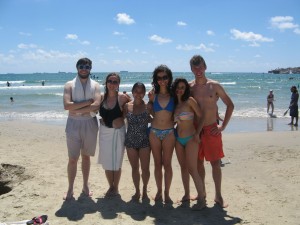
Five Williams students smile for the camera after a refreshing swim in the Mediterranean at Akko (Acre). To the right is the historic section of the city.
We traveled south to Bet She’an the next day. Containing twenty-two layers of settlement dating from the Early Neolithic period to the 8th century CE, Bet She’an (or Scythopolis, in Greek) became one of ten major centers of Roman administration in the Galilee region, together called the Decapolis cities. The site’s best-preserved remains, including a 2nd-century theater and a Roman bathhouse, date to this period as well as to the Byzantine and early Islamic eras. The site was abandoned after the earthquake of 749 CE.

